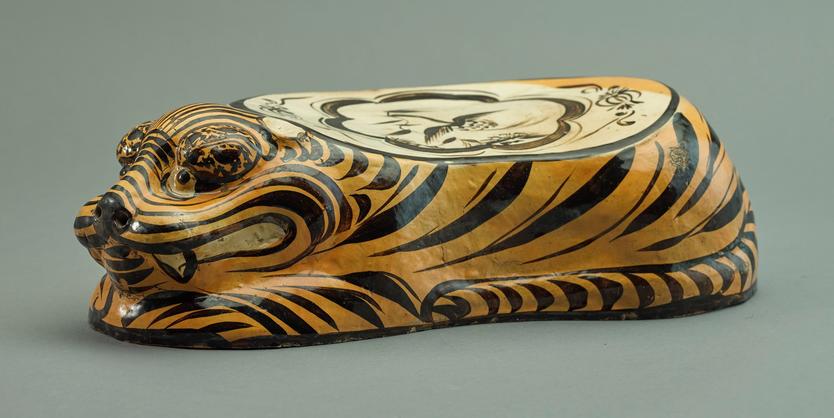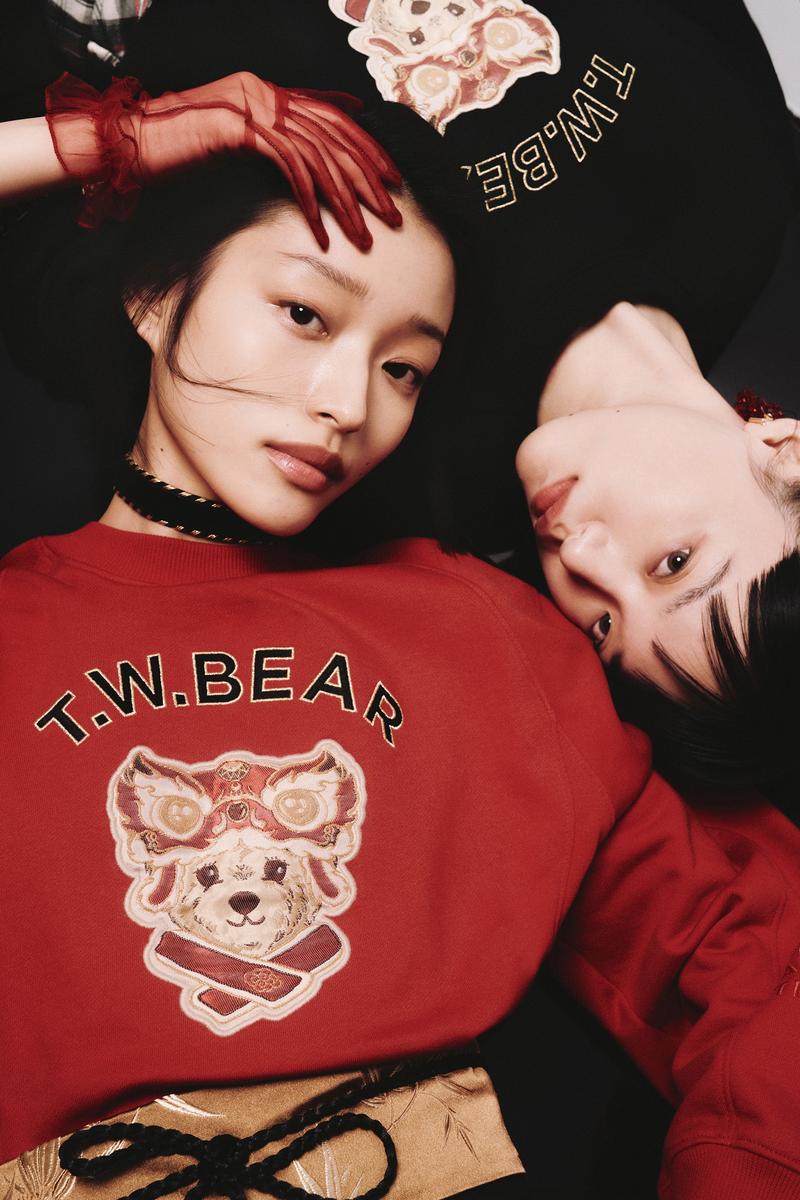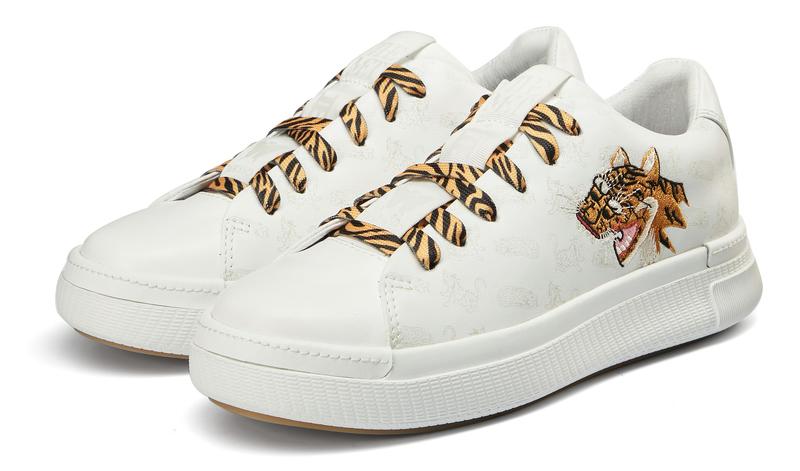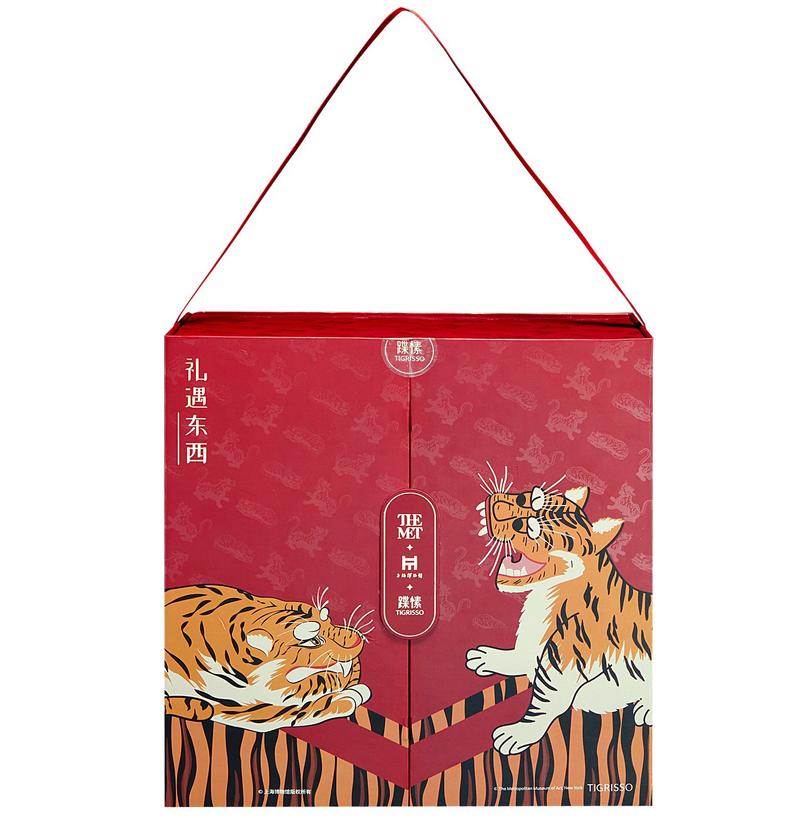 The design of fashion products, such as sweaters and shoes, is inspired by traditional artworks, including a Jin Dynasty (1115-1234) painted ceramic pillow in the form of a tiger from the Shanghai Museum. (PHOTO PROVIDED TO CHINA DAILY)
The design of fashion products, such as sweaters and shoes, is inspired by traditional artworks, including a Jin Dynasty (1115-1234) painted ceramic pillow in the form of a tiger from the Shanghai Museum. (PHOTO PROVIDED TO CHINA DAILY)
As the Year of the Tiger in the Chinese lunar calendar approaches, all kinds of items related to the Chinese zodiac have been selling rapidly.
Since last month, the sales value of goods featuring tiger elements has risen 9.4 times year-on-year, according to e-commerce platform JD.
The popularity of the zodiac illustrates people's growing recognition of traditional Chinese culture, both at home and abroad.
In China, the tiger is known as the "king of all beasts" and it is a symbol of bravery and power. In ancient times, tiger patterns were carved on bronze or golden seals as symbols of military authority. In traditional culture, the tiger was regarded as an auspicious animal that expelled evil spirits and brought blessings and peace.
The zodiac element has been applied to almost every category of consumer goods, including accessories, handbags, cosmetics, stationery, snacks-and clothing, of course.
On Dec 17, the Nanjing Yunjin Research Institute and fashion brand Teenie Weenie jointly launched a new series to celebrate the Year of the Tiger.
A week before the launch, consumers responded positively to a preview, with a large number of presale bookings. After the official launch, the series saw sales of 10 million yuan ($1.57 million) in just two weeks.
 The design of fashion products, such as sweaters and shoes, is inspired by traditional artworks, including a Jin Dynasty (1115-1234) painted ceramic pillow in the form of a tiger from the Shanghai Museum. (PHOTO PROVIDED TO CHINA DAILY)
The design of fashion products, such as sweaters and shoes, is inspired by traditional artworks, including a Jin Dynasty (1115-1234) painted ceramic pillow in the form of a tiger from the Shanghai Museum. (PHOTO PROVIDED TO CHINA DAILY)
Two pieces rocked the market. One was painted with the brand's symbolic bear holding a cute, smiling tiger in her arms, while the other featured the bear wearing a red tiger-head hat.
The latter was designed by Gao Wenzhi, the institute's chief designer. She recalled that in the old days, parents bought their children tiger-head hats to ward off evil spirits, and she's happy to add a modern feel to the old tradition.
"Creating something trendy is not just about looking good, but also about content," said Gao, who has spent many years working at the institute on the study of Yunjin, an ancient type of brocade work that originated in Nanjing, capital of Jiangsu province.
"I often hear people saying that Yunjin is the finest silk fabric, but that it's unaffordable. Yunjin should not be trapped in museums, so I really appreciate the cooperation that helped this traditional culture to reach out to a wider audience."
Liu Ting, from Teenie Weenie's branding team, said,"We want to use modern techniques to present traditional culture and break the stereotype of traditional culture that does not fit with modern lifestyles."
Jian Mingwei, the institute's general manager, said some intangible cultural heritage items are struggling to survive, so he has been moved to see that more young people are learning about the nation's culture.
 The design of fashion products, such as sweaters and shoes, is inspired by traditional artworks, including a Jin Dynasty (1115-1234) painted ceramic pillow in the form of a tiger from the Shanghai Museum. (PHOTO PROVIDED TO CHINA DAILY)
The design of fashion products, such as sweaters and shoes, is inspired by traditional artworks, including a Jin Dynasty (1115-1234) painted ceramic pillow in the form of a tiger from the Shanghai Museum. (PHOTO PROVIDED TO CHINA DAILY)
Footwear as a canvas
Shoes are also a canvas on which it seems fine to paint tigers. Tigrisso, a domestic brand for women, recently launched a pair of white shoes decorated with two embroidered tigers.
The shoes feature two artworks, Rank Badge with Tiger, a Qing Dynasty (1644-1911) silk piece from the Metropolitan Museum of Art in New York, and a Jin Dynasty (1115-1234) painted ceramic pillow in the form of a tiger, from the Shanghai Museum, to show respect for traditional handicraft.
Long Jian, from the company's branding department, mentioned a Chinese idiom, "Good things come in pairs."
"Just like people always hang a pair of couplets or door paintings to embrace good luck, we want to send twice the blessings," he said, adding that many artworks focus on the tiger's ferocity and dignity "but we hope to present its cuteness instead".
"'A cute big cat' displaying softness and coziness is what we want consumers to see. A sense of security and companionship is what we want to bring, and we want to deliver the festive and lively atmosphere of Lunar New Year," he said.
 The design of fashion products, such as sweaters and shoes, is inspired by traditional artworks, including a Jin Dynasty (1115-1234) painted ceramic pillow in the form of a tiger from the Shanghai Museum. (PHOTO PROVIDED TO CHINA DAILY)
The design of fashion products, such as sweaters and shoes, is inspired by traditional artworks, including a Jin Dynasty (1115-1234) painted ceramic pillow in the form of a tiger from the Shanghai Museum. (PHOTO PROVIDED TO CHINA DAILY)
The tigers from the two art pieces-one roaring, the other relaxing-show the animal's different sides.
"With such a design, we are shouting out loud that you can be active or shy as you wish; elegance is not about faking, but about being one's true self in a relaxing way," Long said.
The zodiac is an important part of traditional Chinese culture, and a growing number of brands are adding a Chinese flavor to their designs.
Long said that the younger generation has a growing general recognition of traditional culture, and a sense of the old times has become a modern treasure in the current era.
According to Wang Le, from Teenie Weenie's sales department, the younger generation is more willing to pay for national culture.
Jian said that people nowadays like to buy zodiac-themed products, which are beautiful and provide emotional value. However, if the products charm consumers only with their appearance but not other connotations, that consumer behavior won't last forever.
He said that more than 90 percent of the zodiac-themed products focus only on patterns, but that isn't enough. "Cultural resonance is bound to be a hit," he said.


